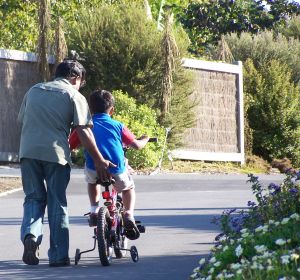 When a foster families chooses to adopt the child or children in their care, there are a few ways to help children make the emotional transition from being “a ward of the State or the Court” to being “a son or daughter.” Parents may not have any problem seeing or feelings the difference in the child’s role within their family. But, children may not clearly comprehend the difference between being a foster child and being an adopted child when they continue to live in the same family.
When a foster families chooses to adopt the child or children in their care, there are a few ways to help children make the emotional transition from being “a ward of the State or the Court” to being “a son or daughter.” Parents may not have any problem seeing or feelings the difference in the child’s role within their family. But, children may not clearly comprehend the difference between being a foster child and being an adopted child when they continue to live in the same family.
When talking to children about the changes adoption means to their lives, parents should try to engage the child in the process and listen carefully to the words the child uses and to the questions the child asks. Questions about the birth family and what has happened with them may need to be addressed. It is important to tell the truth—even if it is painful—and to validate the child’s experience and feelings. While these talks may bring up painful feelings for children, and for parents who love them, helping children to grieve can also help them to move on to a feeling of permanency in their adoptive family.
Talks between parents and children about the differences between being a foster family and an adoptive family will probably need to be repeated several times and in a variety of ways. It is best if these conversations take place when the parent and child are engaged in activities together. Adoption professional H. Craig-Oldsen (1988) offers the following suggestions for making these talks beneficial for the child:
- “Plan the discussion. In collaboration with the social worker, the parents should decide if they want to talk with the child first and have the social worker reinforce what was said in a later conversation, or if they would like to talk to the child together about the change from being in foster care to being adopted. Parents should be prepared to answer the child’s questions that may be raised by the discussion.”
- “Help the child talk about the perceived difference in his or her own words. The parents should ask open-ended questions of the child such as, ‘How do you think being adopted will be different from being in foster care?’ or ‘What do you think the biggest difference will be, when you’re adopted?'”
- “Help the child draw analogies to something in the child’s own life. For instance, a parent might say, ‘This is like the time when . . . .’
There are a number of changes in status that will affect the child, and these should be discussed, depending on the child’s developmental level.”
 To Help children understand the legal differences between foster care and adoption, families might talk about how the adoption court hearing is different from other court hearings the child might have remembered from foster care. Some parents may explain adoption by using marriage as an analogy. The court hearing is like the marriage ceremony, and the adoption certificate is like the marriage certificate that makes the relationship legal and permanent. Parents who use this analogy should be ready for questions about divorce, depending on the child’s experience.
To Help children understand the legal differences between foster care and adoption, families might talk about how the adoption court hearing is different from other court hearings the child might have remembered from foster care. Some parents may explain adoption by using marriage as an analogy. The court hearing is like the marriage ceremony, and the adoption certificate is like the marriage certificate that makes the relationship legal and permanent. Parents who use this analogy should be ready for questions about divorce, depending on the child’s experience.
To help children understand the parenting differences between foster care and adoptive, parents may point out to their child that when they were the foster parents, they had to get a permission slip signed by a caseworker to go on a trip, spend the night at a friend’s house, or travel across State lines; now that they are their legal parents, the parents are responsible and in charge.
For more information about Transitions:
- Getting Ready For Your Child’s Arrival
- Adoptive Parents WAIT!
- Transition is All About the Baby or Child
- Starting you Child’s LifeBook
- Planning For Transition
- When Travel Is Required
- Transition of Siblings Anna’s Story
- From Orphanage or Institution to Home
- Toddler Transitions
Photo credits for this article:  (no use restrictions)
(no use restrictions)
![]() Special Needs and Adoption-Related Terms:
Special Needs and Adoption-Related Terms:
A | B | C | D | E-F | G-H-I | J-K-L | M | N-O | P | Q-R | S | T-U-V-W-X-Y-Z
For more information about parenting special needs children you might want to visit the Families.com Special Needs Blog and the Mental Health Blog. Or visit my personal website.

